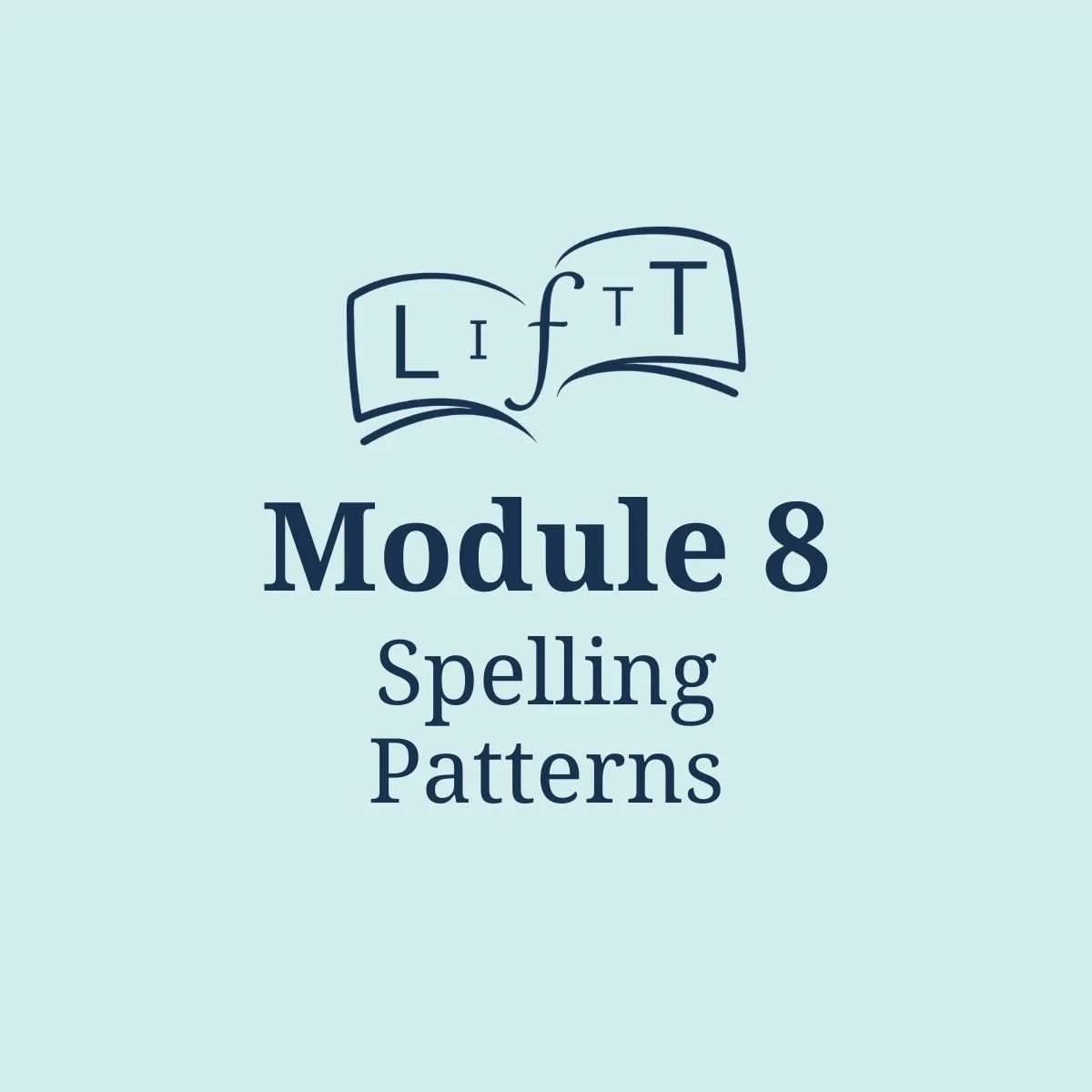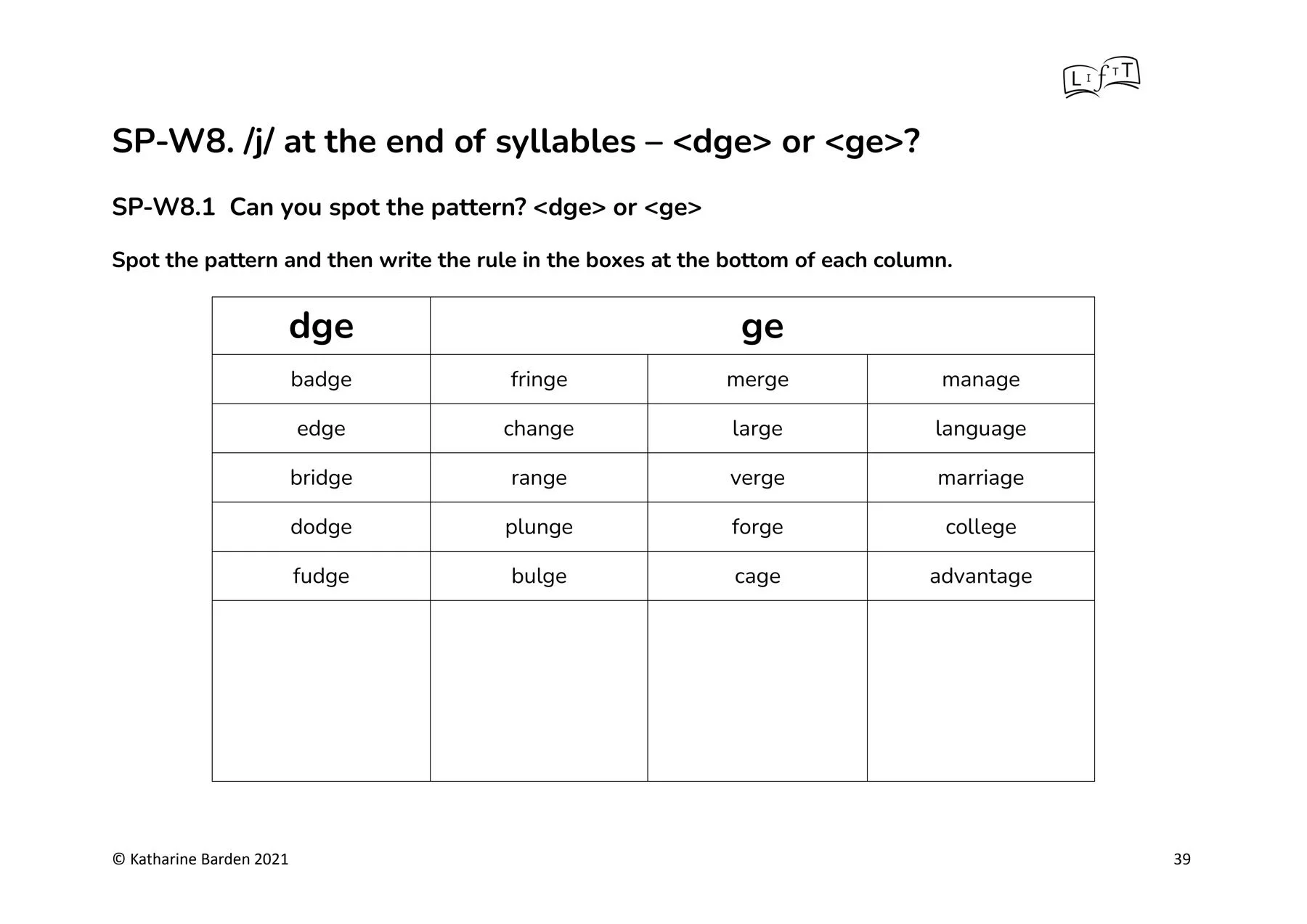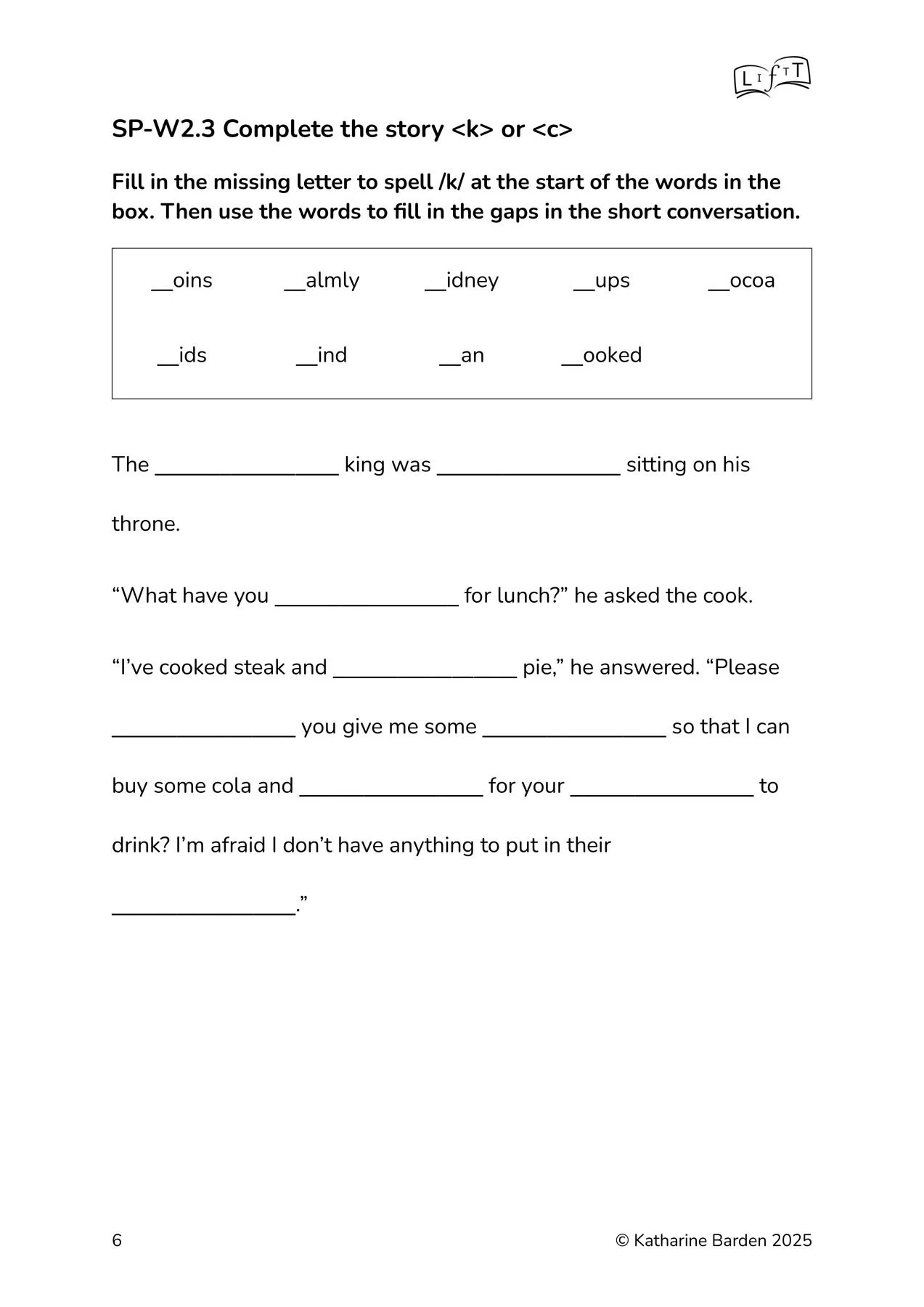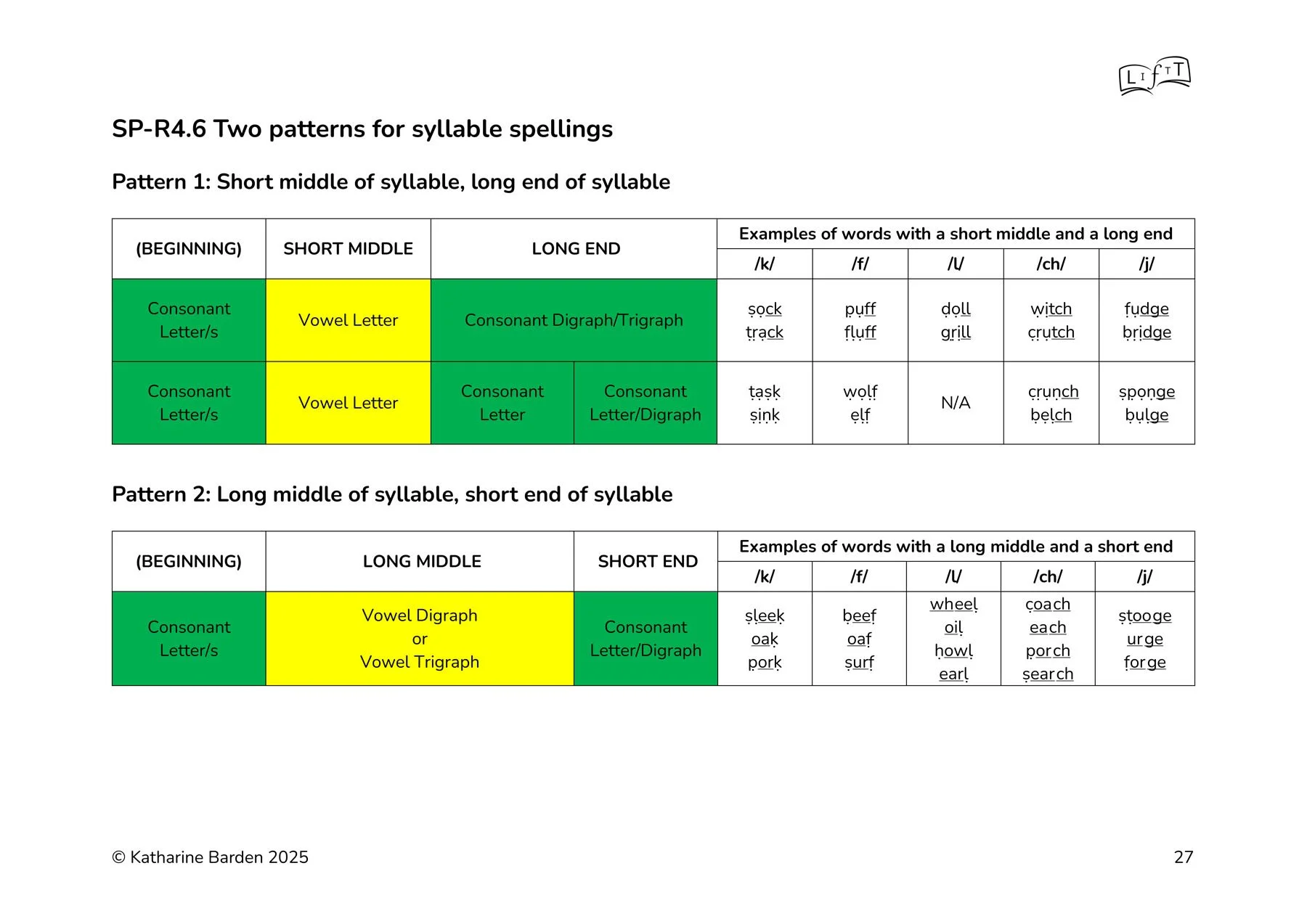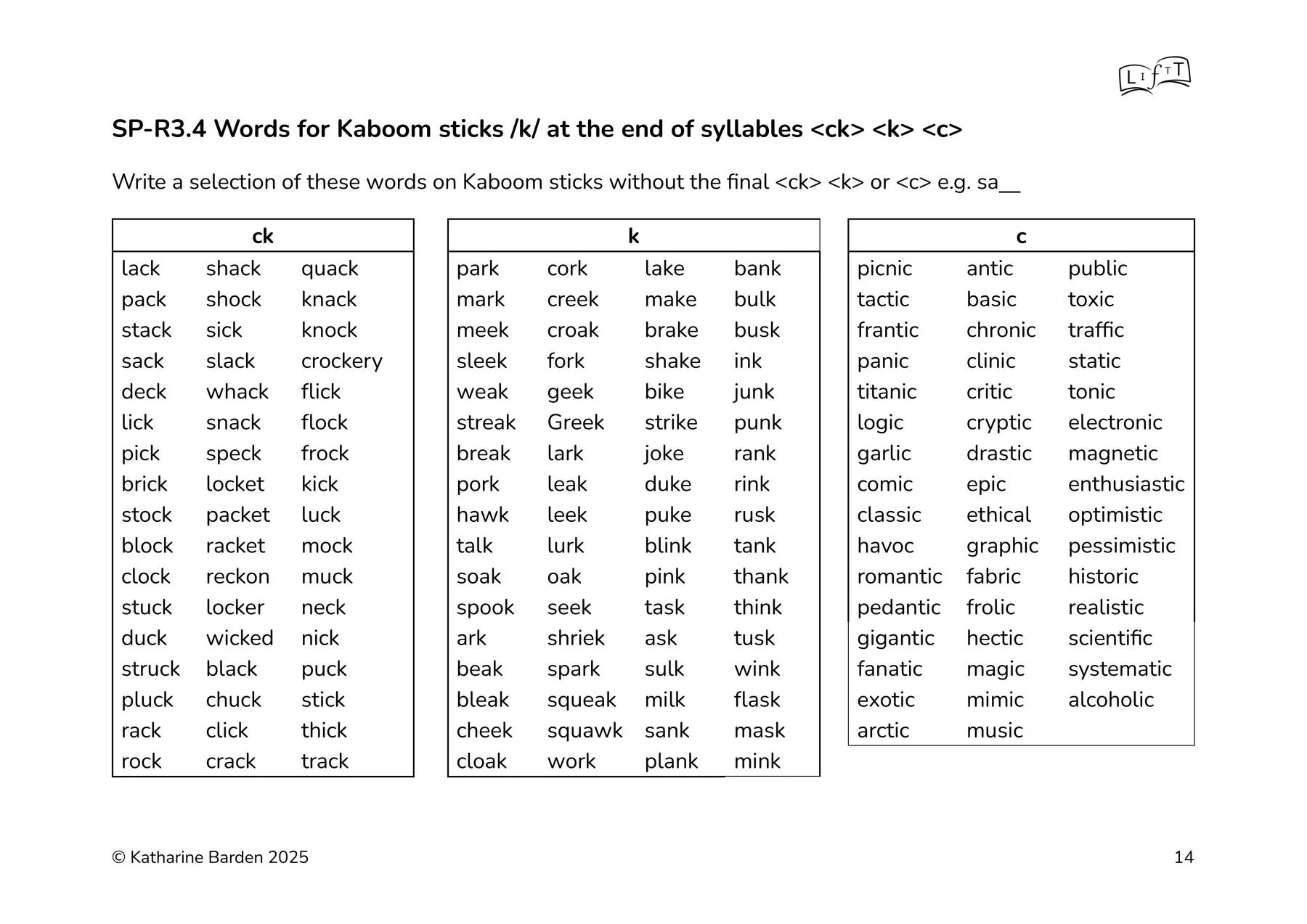When there are several ways of spelling the same sound, students may struggle to choose the correct grapheme. Spelling Patterns helps students to understand many of the common ‘rules’ governing which grapheme to choose.
Overview
Spelling Patterns teaches some common patterns in English spelling, such as when to use single-letter graphemes and when to use double-letter graphemes (e.g. leaf vs puff).
Students are tested on these spelling patterns in the initial LIfTT assessment, so the specific spelling patterns that each student needs to learn will be listed in the output from their assessment. Teachers may also spot errors in students’ independent writing that indicate they need support with these spelling patterns.
The spelling patterns are mostly taught through guided sorting activities, and practised with a range of worksheets, games and other activities.
Step-by-step guidance for teaching Spelling Patterns is available in the Teaching Manual.
When there are several ways of spelling the same sound, students may struggle to choose the correct grapheme. Spelling Patterns helps students to understand many of the common ‘rules’ governing which grapheme to choose.
Overview
Spelling Patterns teaches some common patterns in English spelling, such as when to use single-letter graphemes and when to use double-letter graphemes (e.g. leaf vs puff).
Students are tested on these spelling patterns in the initial LIfTT assessment, so the specific spelling patterns that each student needs to learn will be listed in the output from their assessment. Teachers may also spot errors in students’ independent writing that indicate they need support with these spelling patterns.
The spelling patterns are mostly taught through guided sorting activities, and practised with a range of worksheets, games and other activities.
Step-by-step guidance for teaching Spelling Patterns is available in the Teaching Manual.

